

Anatomy of First Aid: A Case Study Approach
Ronald Bergman, Ph.D.
Peer Review Status: Internally Peer Reviewed
A Marine on patrol in the desert felt a sharp pain in his chest and had difficulty breathing; he called for a corpsman and then collapsed. He had sustained a penetrating bullet wound to his chest on the right side. Air had rushed into his chest and his right lung collapsed. The corpsman recognized the seriousness of this life-threatening wound and knew that the Marine was breathing with one lung. He cut away the Marine's shirt and looked for entrance and exit wounds; he found only an entrance wound. Bleeding was minimal but uncontrollable. The corpsman recognized that on inspiration air entered the opening in the chest caused by the bullet and, on expiration, air was forced out of the thoracic cavity (see illustrations). He prepared a sterile occlusive dressing that was taped securely to the chest over the wound on 3 sides. One edge was not taped leaving an opening to the dressing. He knew that this would act as a "valve" and on inspiration the occlusive dressing would be drawn tightly to the chest by the negative pressure (hence the name "sucking wound"). External air is excluded. On expiration, the air forced out of the thorax escapes at the unsealed edge of the occlusive dressing. Had the corpsman found an exit wound he would have dressed the wound in the same way. As soon as the corpsman finished with the dressing he covered the Marine with a jacket to reduce shock. He called for a stretcher and because of the life-threatening nature of the wound, he had the Marine airlifted by helicopter to a hospital ship lying off shore. He was immediately taken to a navy surgeon for the definitive treatment that is only available in the hospital.
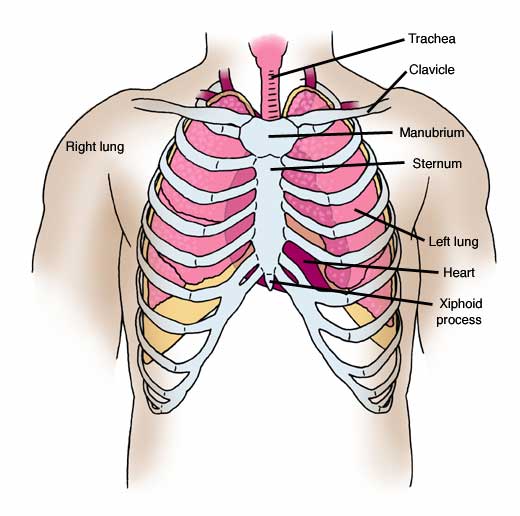
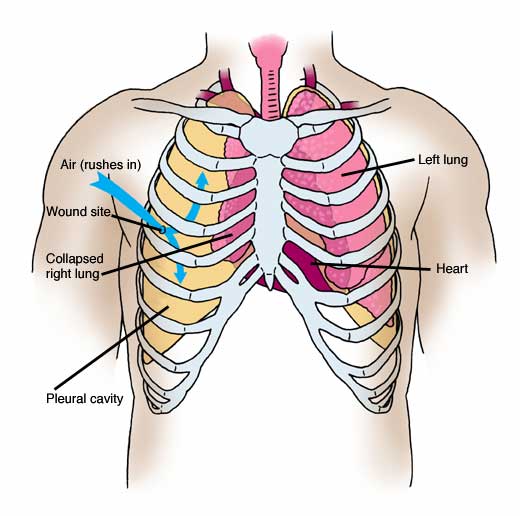
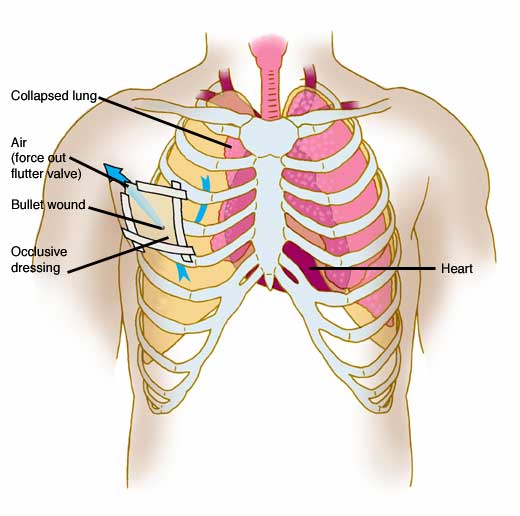
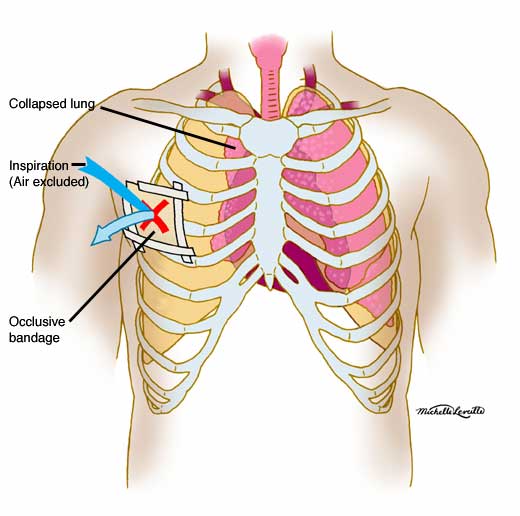
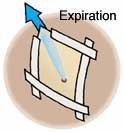
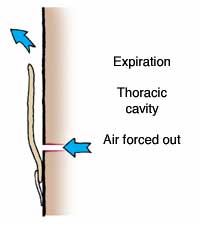
Please send us comments by filling out our Comment Form.
All contents copyright © 1995-2025 the Author(s) and Michael P. D'Alessandro, M.D. All rights reserved.
"Anatomy Atlases", the Anatomy Atlases logo, and "A digital library of anatomy information" are all Trademarks of Michael P. D'Alessandro, M.D.
Anatomy Atlases is funded in whole by Michael P. D'Alessandro, M.D. Advertising is not accepted.
Your personal information remains confidential and is not sold, leased, or given to any third party be they reliable or not.
The information contained in Anatomy Atlases is not a substitute for the medical care and advice of your physician. There may be variations in treatment that your physician may recommend based on individual facts and circumstances.
URL: http://www.anatomyatlases.org/